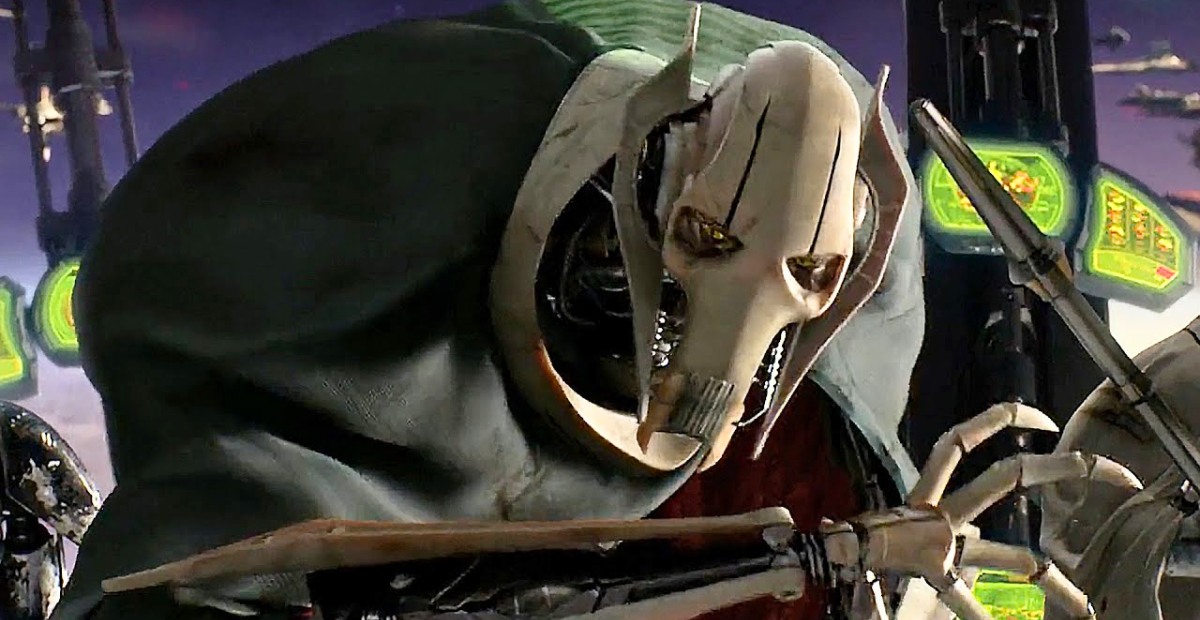If you’ve watched Revenge of the Sith or The Clone Wars, you probably remember that unmistakable sound – General Grievous’s harsh, mechanical cough. It’s one of his defining traits, and it always adds this eerie, unsettling layer to his already terrifying presence. But why exactly does he cough like that? It turns out, there’s more than one answer – and both Legends and Canon give us some pretty interesting details.
Let’s break it down.
The Cyborg Body Was Flawed From the Start (Canon Story)
Let’s start with what happens in Canon.
When the Sith rebuilt Grievous as a cyborg, their goal was to turn him into the ultimate warrior. And in some ways, they succeeded. Grievous didn’t need to eat or drink, he could survive underwater or in space, and he was immune to toxins. His remaining vital organs were sealed inside a gut-sack beneath his armor, protected by rib-like plating.
But the conversion process wasn’t perfect – far from it.
His heart and lungs ended up badly weakened. The implants they added to his body constantly irritated his lungs, which led to a persistent cough that never went away. Over time, it got worse. Breathing became harder for him, and sometimes he couldn’t even speak properly without falling into a coughing fit.
And here’s a bit of a dark detail – the Sith knew about this problem. They actually kept records about the side effects, in case they wanted to perform similar conversions in the future. Grievous was basically a test subject, and sadly, there was no way to fix what had already been done to him.
When Mace Windu Crushed His Chest (and More Behind It) – Legends Story
Now let’s talk about what Legends tells us.
During the Battle of Coruscant, Grievous led a daring assault to kidnap Chancellor Palpatine. As he was making his getaway and transporting Palpatine to the Invisible Hand, Jedi Master Mace Windu confronted him.
Right at the last moment, Windu used the Force to crush Grievous’s chest. That’s the version shown in Star Wars: Clone Wars Volume Two. You can even see Grievous start coughing right after the attack.
Now, this wasn’t the only reason for his condition. Behind the scenes, Lucas and his team also had an intentional design idea: Grievous’s cough was meant to represent an earlier, imperfect version of the technology that would later be used in Darth Vader’s suit. Basically, Grievous’s damaged breathing foreshadows Vader’s iconic mechanical breathing.
In-universe, another reason is that the cybernetic tech available at the time wasn’t advanced enough to fully integrate with Grievous’s organic systems. So even without the Force-crushing incident, his body was already vulnerable. Over time, these elements – imperfect technology and battle damage – combined to give Grievous the permanent cough we know him for.
I’ve seen a lot of confusion about this over the years, and it makes sense. Different Expanded Universe sources sometimes focused on one cause over the other. But in the bigger picture, both played a role.
It All Comes Together
When you look at both versions of the story, they actually fit together better than you might expect.
In Legends, Grievous was already vulnerable because the cybernetic tech of the time wasn’t advanced enough to fully support his organic parts. The encounter with Mace Windu, where his chest got crushed, just pushed that weakness over the edge and made the cough unavoidable. On top of that, Lucas and the design team purposely made Grievous’s breathing reflect the kind of flawed prototype that would eventually lead to the perfected system used in Darth Vader’s suit.
Canon focuses more on the medical side: the implants irritated Grievous’s lungs, and his damaged heart and lungs couldn’t keep up anymore. Over time, his condition worsened, causing those harsh coughing fits and labored breathing we always hear.
So that cough isn’t just a random sound effect – it’s the result of both physical trauma and flawed technology. To me, it really humanizes Grievous. Even though he became this terrifying machine, he was never truly whole. The cough reminds us that beneath all that armor, there’s still someone trapped in a body that was never built to last.

